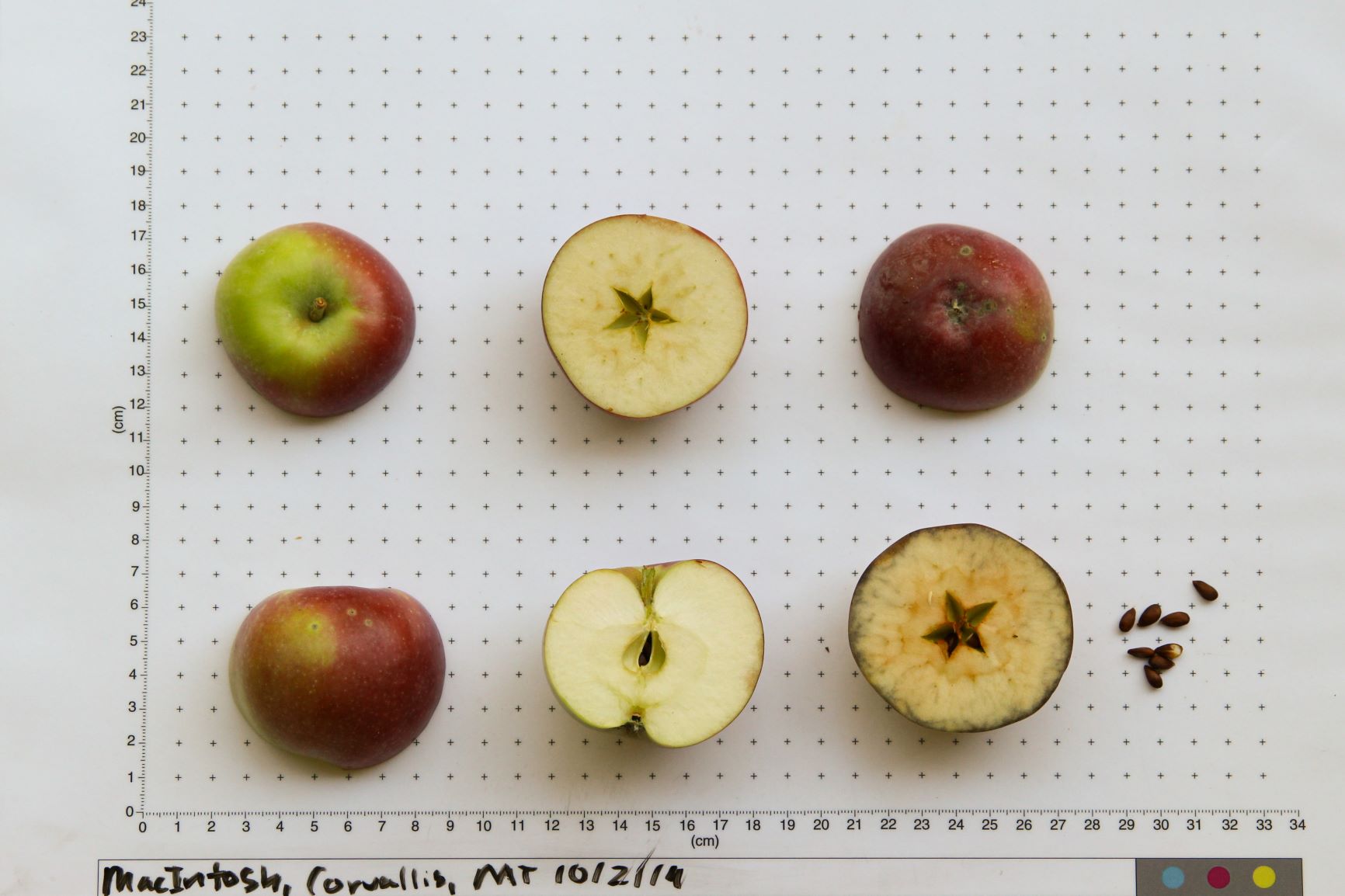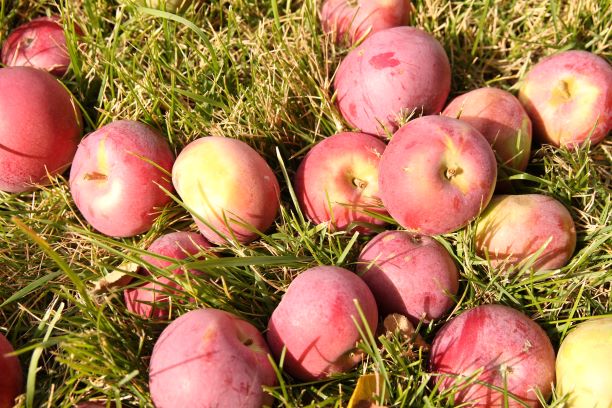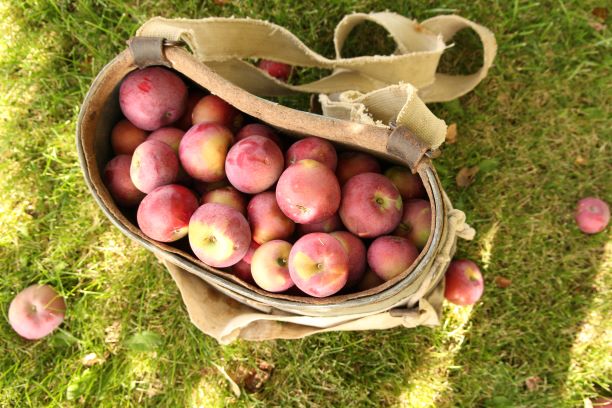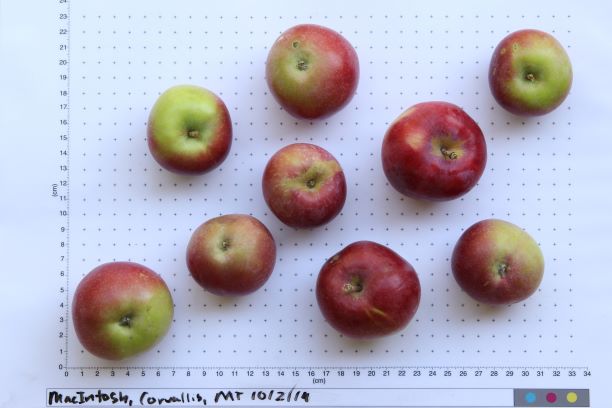McIntosh
Fruit Description

Size: Medium to large.
Shape: Flat-round to round conical, lop-sided, irregular sometimes regular, faintly ribbed.
Skin: Yellow to yellow green ground color, scarlet to deep red flesh often mottled or faintly striped. Dots visible particularly on flush. Thick bloom casts bluish purple hue, when rubbed off skin is shiny. Waxy.
Stalk (stem) and Cavity: Short to medium, slender to medium in thickness, protruding or flush with cavity. Cavity variable. Often large, wide and acuminate but maybe be acute or obtuse. Cavity may be russetted.
Basin: Medium in depth and width, abrupt. Slightly furrowed.
Calyx (Eye): Closed or slighlty open, erect convergent. Stamens variable median to basal. Calyx tube conical. Core lines meeting, green.
Core (Vertical): Median to sessile, carpels ovate.
Carpels and Axial Sac (Transverse): Abaxile (open), convex to a point, a real star! Axial sac open.
Seeds: Brown, large, acute.
Flesh: White to cream with green margins especially when picked early. Occasionally, red streaking. Firm, juicy, tender.
Flavor: Extremely aromatic, familiar scent, perfumed with the quintessential apple smell. Subacid becoming sweet.

Additional Notes
Synonyms: McIntosh Red
First Recorded: c.1796, named 1870
Origin: Canada
Bloom time: Mid
Harvest: Late
Use: Dessert, sauce, cider
Storage: Poor
Disease: Some susceptibility to fire blight and scab.
Tree: Vigorous, large, spreading.
Parentage: Fameuse
Frequency in Montana Orchards based on DNA testing: High, especially in former commercial orchards in the Bitterroot, Flathead and Clark's Fork Valleys.
Look alikes: Fameuse and Cortland.
History
In 1796, John McIntosh uncovered several wild apple trees while clearing second growth timber in Dundas County, Ontario, Canada. He transplanted the trees and what is now the McIntosh survived. It was later propagated by his son Allan McIntosh and distributed widely for commercial purposes.
A popular commercial tree in Montana orchards, the McIntosh was reportedly planted by Amos Buck of the Bitterroot Valley in 1878, bearing six years later in 1884. It became a very popular cultivar among early commercial growers and was promoted heavily in the Bitterroot Valley, coined "The Land of the McIntosh" by locals. In 1910 after 40 years growing trees in the Bitterroot Valley, D.C. Bass recommended the following to commercial orchardists, “I would plant Red McIntosh, Alexanders and crab apples. There is big money in Northwest Greenings, and the Original Bethel, from Bethel, Vermont, is the best winter apple we have. . ." The McIntosh is often described in historical records as McIntosh Red.



References:
Bass, D. C. “First Commercial Orchard.” Western News. May 1, 1910: 11.

